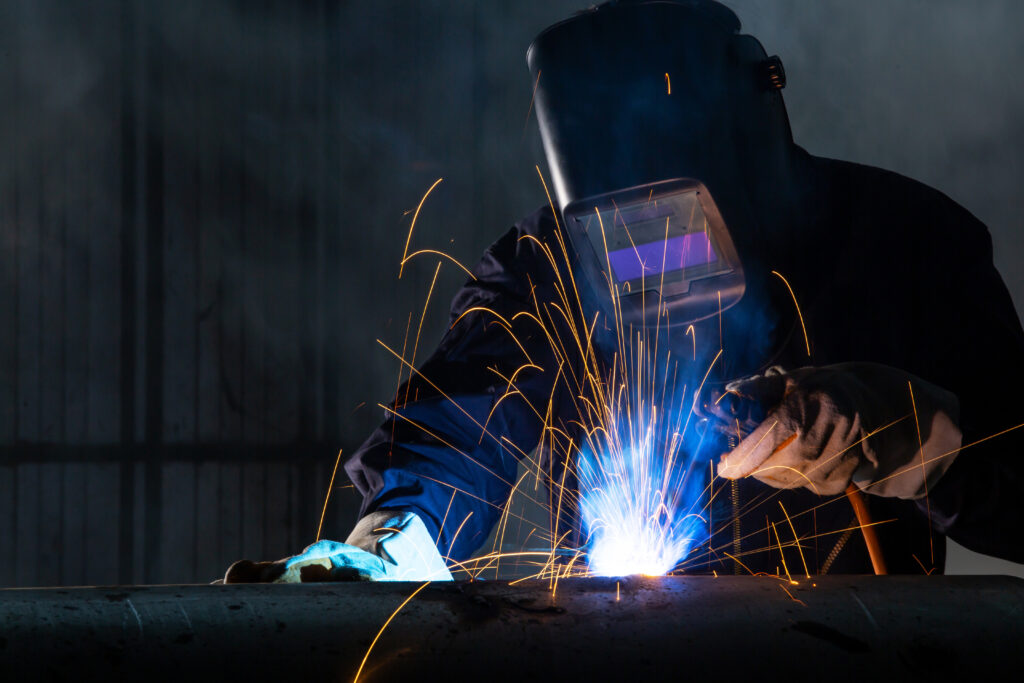
Why Welding Method Matters in Modern Manufacturing
In today’s competitive manufacturing landscape, welding isn’t just about joining metal — it’s about efficiency, consistency, safety, and cost control. The debate between robotic welding and manual welding is more relevant than ever as OEMs seek to balance productivity with flexibility.
Understanding the strengths and limitations of each method helps manufacturers choose the right process for the job — and often, the winning strategy is a mix of both.
What is Robotic Welding?
Robotic welding uses programmable machines with welding torches to perform automated welds. These robots execute precise, repeatable movements at high speeds, making them ideal for high-volume and standardized production.
Key Advantages of Robotic Welding
- Precision and Consistency – Eliminates human error, ensuring weld uniformity across thousands of parts.
- Increased Productivity – Robots weld at speeds of up to 35 inches per minute, operating continuously without breaks.
- Enhanced Safety – Removes workers from dangerous environments with extreme heat and fumes.
- Long-term Cost Efficiency – While upfront investment is high, per-unit costs drop significantly as production volume increases.
Limitations of Robotic Welding
- High Initial Investment – Equipment, programming, and setup costs can be substantial.
- Limited Flexibility – Not ideal for small-batch or constantly changing projects.
- Requires Consistent Parts – Best suited for components with uniform dimensions and positioning.
What is Manual Welding?
Manual welding relies on skilled human welders who directly control the process. While slower than automation, manual welding excels in adaptability and craftsmanship.
Key Advantages of Manual Welding
- Superior Flexibility – Easily adapts to custom designs, irregular shapes, or one-off projects.
- Lower Startup Costs – Requires less investment in equipment and setup.
- Complex Project Capabilities – Skilled welders handle unique geometries and real-time adjustments.
- Craftsmanship – Experienced welders bring problem-solving and quality adjustments automation can’t replicate.
Limitations of Manual Welding
- Productivity Constraints – Human welders can’t match 24/7 robotic production rates.
- Quality Variability – Fatigue, skill level, and human error create inconsistencies.
- Safety Risks – Direct exposure to arc radiation, fumes, and high heat.
Making the Right Choice for Your Operation
Choose Robotic Welding When:
- You have high-volume, repetitive production.
- Parts are standardized with consistent dimensions.
- Consistency and repeatability are critical.
- Long-term cost savings outweigh upfront investment.
- Improving workplace safety is a top priority.
Choose Manual Welding When:
- You’re working on custom prototypes or low-volume runs.
- Production involves irregular or varying part designs.
- Budget constraints prevent large upfront automation costs.
- Complex geometries require human adaptability.
The Bottom Line
Robotic welding and manual welding both have strengths.
- Robotic welding: unmatched speed, consistency, and cost-effectiveness for large-scale production.
- Manual welding: essential flexibility, craftsmanship, and problem-solving for specialized jobs.
The winning approach is simple: let robots handle the repetitive, high-volume work while skilled welders tackle complex, custom, or variable tasks. By aligning the right method with the right job, manufacturers maximize efficiency, quality, and profitability.
Looking to scale your welding operations with precision and efficiency?
Contact Riverside Industries to learn how our robotic and manual welding services can support your production goals.
